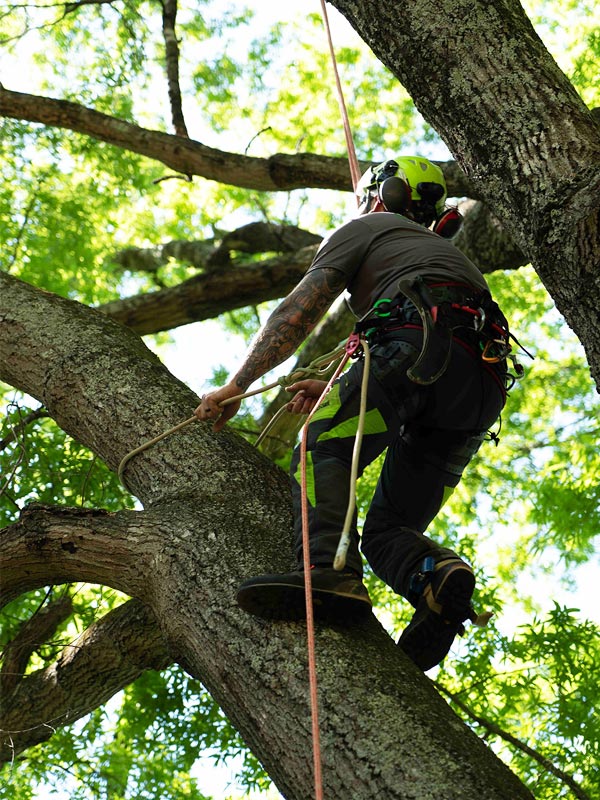Emergency Tree Removal: When and Why It’s Necessary

Emergency Tree Removal – When and Why It’s Necessary
Trees can be beautiful additions to your property, but they also pose serious risks to people and structures. Whether they’re damaged by severe weather or just overgrown, it’s essential to have them checked by professional arborists.
While routine tree service helps prevent these issues, emergency tree removal is often needed. Here are some common warning signs that it’s time to call for help:
Deadwood
Dead branches, known as a widow maker, pose a serious threat to people and property. They can easily break off during storms and light winds causing damage or injury. It’s important to have all dead limbs removed by a professional, certified arborist or tree surgeon.
Removing deadwood decreases the risk of fungal infection and pests spreading throughout the tree. Fungus and disease love to thrive in dead wood, spreading quickly from branch to branch and damaging the overall health of the tree.
Additionally, the decayed wood in dead limbs creates fissures in the trunk, allowing water to stand in these areas. This moisture can cause fungus and decay organisms to spread through the entire trunk, eventually killing it. Regular deadwood removal is essential to protect your property, reduce liability and ensure the health of your trees. click for more: https://kansascitymotreeservice.com/services/tree-removal/
Hollow Trunk
A hollow trunk is a serious safety hazard and should be removed promptly. It can easily collapse and fall over, especially if it’s near a home or other buildings. It also attracts pests and can spread disease. It’s important to get a professional arborist to inspect and advise you on the best course of action.
If a hollow area or hole is present, this usually indicates that the tree is decaying from the inside out. It’s not a good idea to fill in or paint the holes as this could worsen the problem. Instead, call a professional to assess the situation and remove the tree. It is often more cost-effective than trying to save a hollow tree through poor care practices.
Damage to Power Lines
While high winds, heavy ice accumulation and snow are primary causes of fallen limbs and trees, weakened roots are another factor. Regular assessments and prompt trimming or removal of weakened roots can reduce the risk of tree fall during storms.
If a tree limb or entire tree has fallen near or into power lines, it’s an emergency situation that requires immediate attention from trained arborists. Even if the wires don’t appear to be live, they may still carry thousands of volts that could cause severe injury or death.
Aside from potential safety hazards, an overgrown and sickly tree can decrease property value. Investing in an emergency tree service will help to address existing hazards, improve landscape appearance and expedite the sale process. Moreover, homeowner’s insurance typically covers the cost of emergency tree services. It’s worth contacting your insurance company for more information.
Leaning Trees
While a certain amount of lean is natural for many trees, a sudden lean may be a sign that the roots are failing and the tree could become dangerous. If a tree leans more than 15% away from vertical, it is time to call an arborist for emergency service.
In some cases, the lean can be corrected through preventative measures like limbing or cabling. However, this is only possible if the problem is addressed early. If a leaning tree is close to power lines, it is likely that emergency removal is necessary.
The right emergency tree services can protect your property, increase your home’s value, and add curb appeal to your yard. Knowing the warning signs and taking prompt action can help prevent escalating costs and keep your family and friends safe. By following these simple tips, you can enjoy your landscape with peace of mind and confidence that your property is protected.